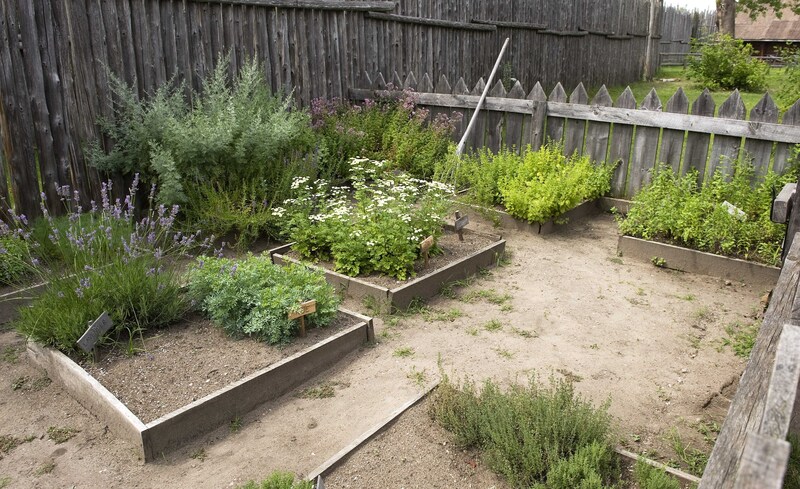Crafting a Magical Child-Friendly Garden
Posted on 01/09/2025
Crafting a Magical Child-Friendly Garden: Complete Guide to a Safe and Inspiring Outdoor Space
Transforming your backyard or outdoor area into a magical child-friendly garden is one of the most rewarding projects you can undertake as a parent, caregiver, or gardening enthusiast. Not only does it create a world of imagination and adventure for little ones, but it also encourages physical activity, inspires creativity, and nurtures a love for nature from an early age. In this comprehensive guide, we'll explore practical tips, design ideas, safety considerations, and creative ways to craft a backyard paradise that will delight children and become a cherished family oasis.
Why Build a Magical Child-Friendly Garden?
Children's gardens are more than just play areas. They serve as vital spaces for learning, growth, and connection with the natural world. Here are a few reasons why designing a magical garden for children is a wonderful investment:
- Encourages Outdoor Play: A dedicated, safe space invites children to leave screens behind and explore outside.
- Fosters Creativity and Imagination: Themed gardens spark make-believe play, puzzle-solving, and storytelling.
- Teaches Responsibility: Through gardening tasks, children learn to care for living things and develop a sense of stewardship.
- Supports Learning: Gardens provide countless opportunities for hands-on education about plants, insects, weather, and the environment.
- Boosts Health and Wellbeing: Gardening improves mood, coordination, and even healthy eating habits, especially when growing fruits and vegetables.

Key Elements of a Child-Friendly Garden
To create a magical and child-safe garden, it's essential to think from a child's perspective while incorporating essential elements that inspire wonder, learning, and play.
1. Safety First: Setting the Foundation
Safe garden design ensures that kids can explore freely and confidently. Here's what to keep in mind:
- Fencing: Secure the perimeter with child-proof fencing to prevent wanderings.
- Soft Ground Surfaces: Mulch, grass, bark, or rubber mats cushion falls and reduce injuries.
- Non-toxic Plants: Choose plants and flowers that are not poisonous or harmful if touched or tasted. Avoid species like foxglove, oleander, and lily of the valley.
- Tool and Chemical Storage: Keep gardening tools, pesticides, and fertilizers locked away and out of reach.
- Shade: Provide shaded spots with trees, pergolas, or large umbrellas to protect delicate skin from sunburn.
By prioritizing safety, you lay the groundwork for hours of worry-free outdoor fun!
2. Enchanting Themes for Magical Spaces
The key to a magical child-friendly garden is storytelling through design. Consider one or more of these enchanting themes:
- Fairy Tale Garden: Think tiny fairy houses, toadstool stools, winding pebble paths, and secret "fairy doors" nestled in tree trunks.
- Dinosaur or Prehistoric Jungle: Add faux fossils, dino figures hidden among ferns, and "dig zones" for archaeological play.
- Woodland Adventure: Incorporate tree stumps, log seating, and birdhouses, and encourage wildlife with native plants and bug hotels.
- Secret Garden: Create hidden nooks, archways made of climbing plants, and a reading corner surrounded by fragrant blooms.
Personalize your kid-friendly garden by asking children for their dream themes and favorite stories.
3. Stimulating the Senses with Garden Features
Craft your outdoor play space to engage all five senses for a truly magical experience:
- Touch: Include different textures such as soft lamb's ear, rough pine cones, and smooth stones for tactile exploration.
- Sight: Plant brightly colored flowers, ornamental grasses, and rainbow-hued vegetables.
- Sound: Add wind chimes, bird feeders, rustling bamboo, or water features like fountains or small streams.
- Smell: Grow fragrant herbs (lavender, mint, basil) and scented blooms (roses, sweet peas).
- Taste: Dedicate a section to edible plants such as strawberries, cherry tomatoes, and bush beans.
4. Inviting Play and Exploration
The heart of any magical, child-friendly garden is the opportunity for creative play:
- Natural play structures: Logs, stepping stones, sandpits, balance beams, or climbing frames crafted from wood.
- Hideaways and dens: Tipis, tented reading nooks, willow tunnels, or bean pole teepees.
- Paths and trails: Meandering stone or wood chip paths that encourage discovery.
- Interactive zones: Mud kitchens, chalkboard walls, or "potting benches" for kids' own gardening endeavors.
Choosing the Best Plants for a Safe and Magical Children's Garden
Plant selection is essential for both safety and sensory delight. Here are excellent choices for a child-proof garden:
- Sunflowers: Tall and cheerful, ideal for creating hiding spots or "sunflower houses."
- Snapdragons, pansies, marigolds: Non-toxic and visually vibrant.
- Herbs: Mint, basil, chives--great for smelling, tasting, and cooking experiments.
- Strawberries, blueberries, bush beans, cherry tomatoes: Easy-to-grow snacks with quick results.
- Lamb's ear, moss, ferns: Soft textures for safe, sensory leaf-rubbing and exploring.
Avoid plants with thorns, toxic berries, or sap that may cause rashes. If in doubt, consult local gardening centers or online lists of child-safe plants for your climate.
Incorporating Wildlife and Eco-Friendly Practices
Create an eco-conscious magical kingdom by attracting beneficial wildlife and teaching sustainable practices:
- Bug hotels and butterfly houses: Encourage observation of pollinators and insects.
- Bird feeders and baths: Bring feathered friends into close view for bird-watching.
- Composting bins: Let children help compost food scraps and garden waste, watching the magic of decomposition.
- Rainwater collection: Set up rain barrels and explain the importance of water conservation.
These elements not only support biodiversity but add richness to the learning experiences your magical children's garden offers.
Step-by-Step Guide: Designing Your Magical Child-Friendly Garden
Here's a step-by-step plan to help you design a beautiful and functional garden retreat for kids:
Step 1: Involve the Kids in Planning
Let children become garden designers! Show them options through pictures or visits to local parks. Ask what colors, shapes, and features excite them and let their imagination guide the project.
Step 2: Create a Flexible Layout
Map out paths, play zones, vegetable plots, and quiet spots using string or garden hoses as placeholders. Leave space for change as children's interests evolve.
Step 3: Prepare the Ground
Remove debris, check for hazards, and level surfaces for play equipment. Install edging to define areas and keep mulch or sand in place.
Step 4: Build and Install Structures
Set up fences, playhouses, or raised beds first. Next, lay pathways and add benches or tables at kid-friendly heights.
Step 5: Plant with Purpose
- Start with easy-grow, child-safe plants in key zones.
- Let kids sow seeds, water, and label plants with homemade signs.
- Mix edibles, flowers, and sensory plants to cover every sense and taste.
Step 6: Add Magic Touches and Play Features
Install fairy lights, stepping stones, hidden objects, or fun signs in unexpected places.
Step 7: Maintain and Evolve Your Space
Let children play an active role in watering, weeding, and harvesting. Each season offers opportunities to add, move, or decorate as their curiosity grows.
Creative DIY Ideas for a Magical Child-Friendly Oasis
Looking for budget-friendly or upcycled ideas to enhance enchanting appeal?
- Painted rock trails: Use flat stones painted with ladybugs, frogs, or arrows for a whimsical path.
- Fairy and gnome doors: Attach crafty doors to tree bases or fence posts.
- DIY musical garden: Hang recycled metal tins, pipes, or shells for homemade wind chimes.
- Tire planters: Paint old tires with bright colors and use as flower or herb beds.
- Chalkboard walls or signs: Encourage impromptu art and garden journaling.
Promoting Environmental Awareness in Your Child's Garden
One of the greatest gifts of a magical garden is teaching children about the environment. Simple steps include:
- Encouraging "bug safaris" to learn about beneficial insects.
- Setting up small compost bins and letting kids add kitchen scraps.
- Planting drought-tolerant and native species to support local wildlife.
- Reusing materials for art projects and garden features.
These lessons are long-lasting and foster a deep connection between children and the earth.
Safety Checks and Supervision
As your magical child-focused garden develops, conduct regular safety checks:
- Inspect play equipment for stability and splinters.
- Clear paths of tripping hazards and sharp rocks.
- Replenish mulch or soft ground materials as necessary.
- Monitor plant growth and remove any that may become hazardous.
Supervise younger children and teach older ones about garden rules and safe tool use, cultivating both confidence and independence.

Encouraging Year-Round Enjoyment
Make your magical child-friendly backyard garden an all-season retreat by incorporating:
- Spring bulbs and blossoms for early color and pollinators.
- Summer shade structures and water play features.
- Autumn leaf piles and sensory harvest displays (pumpkins, gourds).
- Winter bird feeding stations and places for quiet, snowy observation.
With a little planning, your kid's garden can remain a place of adventure, relaxation, and inspiration no matter the weather!
Conclusion: Unleash the Magic and Watch Them Grow
Creating a magical, child-friendly garden is about more than just plants and paths--it's about opening a world of wonder, play, and environmental stewardship. By focusing on safety, sensory appeal, imaginative design, and sustainability, you'll provide children with a nurturing space where they can learn, explore, and flourish. Whether your outdoor sanctuary is large or small, every family garden has the potential to become a beloved haven for making memories and growing together for years to come.
So grab your trowel, invite your little helpers, and start crafting the enchanted landscape of their dreams. The magic of gardens lies not only in the flowers and foliage but in the endless smiles, stories, and discoveries children will find within!

